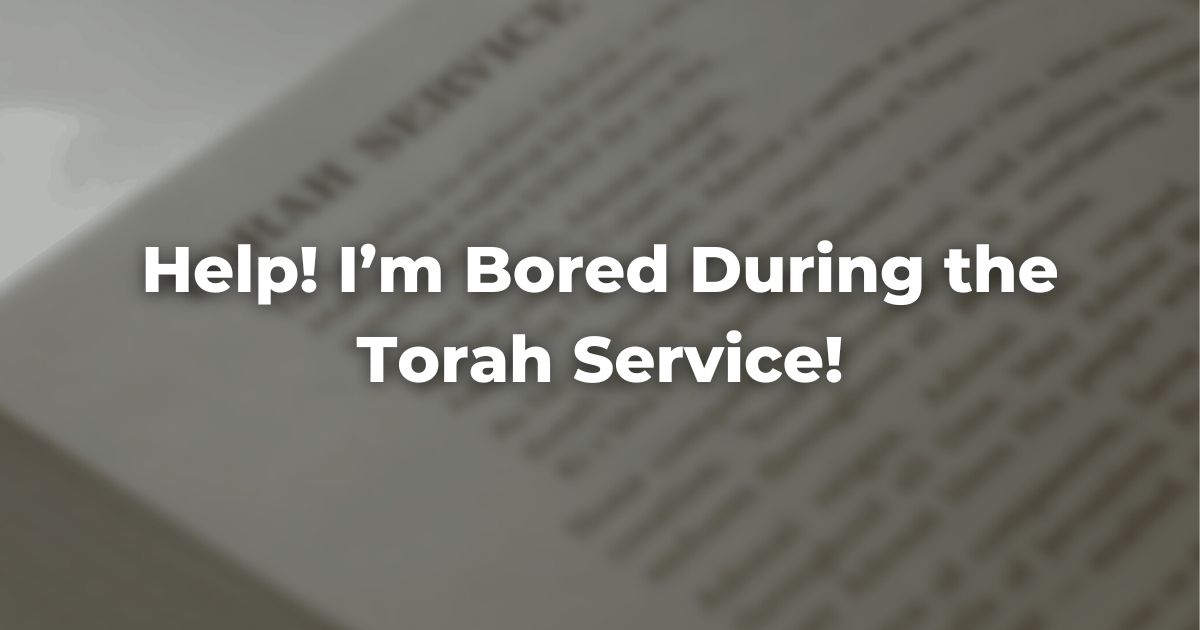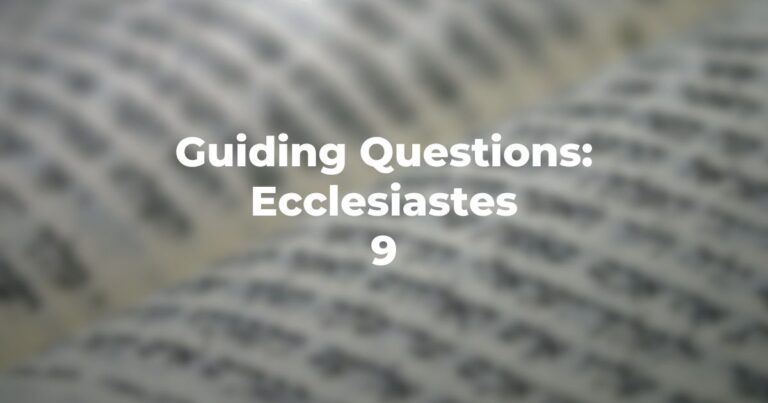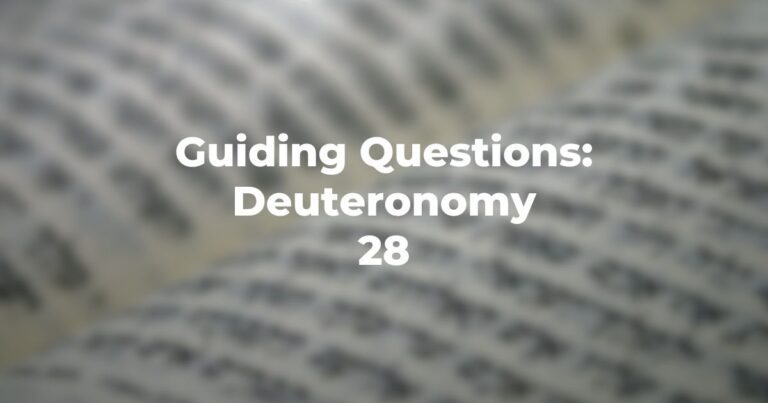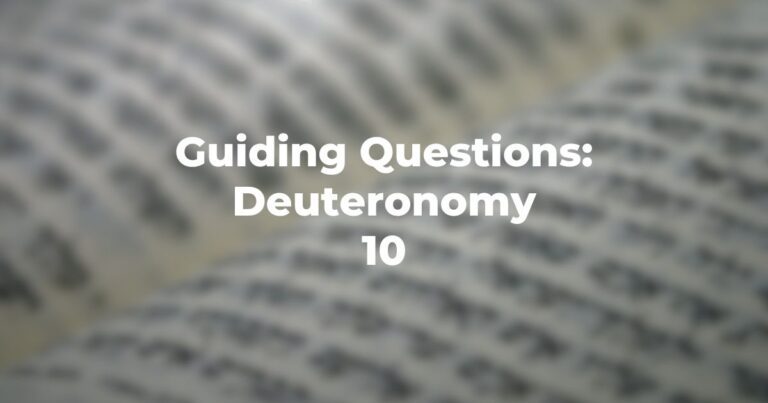We have all been there, so we might as well admit it. It’s Shabbat morning. You’re at shul. You’re about halfway through the fourth reading of the TorahRefers to the first five books of the Hebrew Bible, the Tanakh, also called the Five Books of Moses, Pentateuch or the Hebrew equivalent, Humash. This is also called the Written Torah. The term may also refer to teachings that expound on Jewish tradition. Read more service. Maybe the reader is a bit slow, maybe it’s a long Torah portion (parsha), maybe the air conditioning isn’t working well enough (or too well!). The book with the Torah readings in it (humashA collection of the Five Books of Moses, Pentateuch, or the Hebrew equivalent. Includes the haftarot readings, and usually contains some commentary. It is often used on Shabbat mornings to help follow the Torah reading. Read more) sits opened or closed on your lap. You stare into space, offering one of the most heart-felt prayers of your life, “please, G-d, let it be over soon.”
I am not G-d, but I hear you. Here are a few strategies which have worked for me over many years of sitting in shul to make the Torah reading experience more meaningful.
1. Read the Commentary in Your Humash
The Etz Hayim Humash (the big red book) offers a huge collection of comments and thoughts on every parsha in the weekly reading. There are two main sections. Above a small line is a selection from the Jewish Publication Society’s Torah Commentary, an academic commentary on each of the Five Books of Moses written by some of the greatest Torah scholars of the last century. Below the line is a running commentary by Rabbi Harold Kushner z’l, best known for his book When Bad Things Happen to Good People.
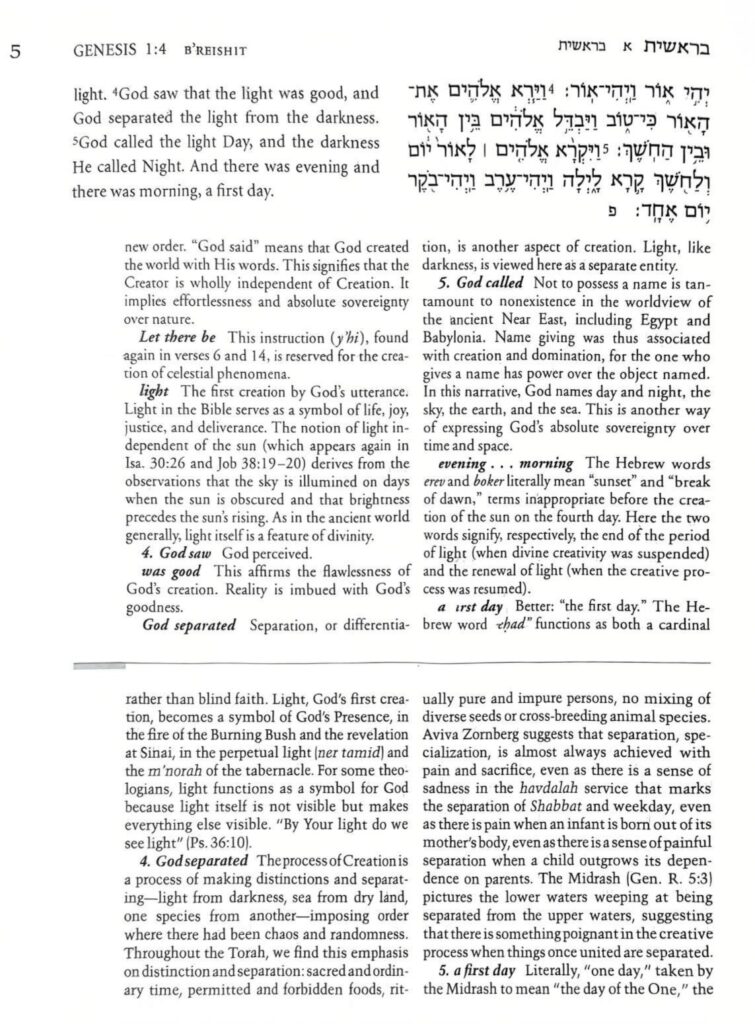
The JPS commentary is concerned with explaining the structure, history, place names, and word choices of the Torah text. Rabbi Kushner’s commentary is about meaning-making and emotional connections.
By reading the commentaries and allowing yourself to get lost in the explanations, you may learn something new. And don’t worry about falling behind in the Torah reading! Ideally, a person should listen to the Torah reading as it goes and follow along, but if you’re bored, you’re probably not following along anyway. If it troubles you, perhaps stick to the comments in each aliyah as the person reads them, so you’re still “following along.”
2. Bring Your Own Torah Commentary
Let’s say that you’ve spent the last year already reading the Etz Hayim Humash. What now? It’s likely time for you to get a new commentary! Perhaps your synagogue already has more than one available. If your synagogue has a library, you’ll make the rabbis at your shul quite happy if you ask to borrow a Torah commentary from it.
Here are just a small selection of Torah commentaries to look for:
- Mikraot Gedolot. A book with the most important classical commentators in it–like Rashi, Ramban, and Ibn Ezra. There is a translated version available for purchase, but it can be pretty pricey. You can also find books with just one commentator, like Rashi.
- The Hertz Humash. The standard English humash before the Etz Hayim was published in 2002, and the comments of Rabbi Joseph Hertz make for interesting reading.
- The JPS Torah Commentary Series. This is the text from which much of the Etz Hayim Humash comments were taken and of which many Conservative synagogues have a copy. It is an academic read of the Humash, which makes it a little dense but very worth it.
- The Torah: A Women’s Commentary. This book is a publication of the Reform movement’s CCAR, and it was the first collection of Torah commentaries written entirely by women.
3. Bring a d’var Torah with you
Maybe you’re interested in learning about the parsha from another scholar in addition to your Rabbi. There are many publications, both online and in print, which have divrei Torah (sermons) on every parsha. You could read them in shul during the Torah service or before Shabbat to inspire you as you follow along with the Torah reader in shul.
A few top suggestions, though there are so many more:
- Torah Sparks from the Fuchsberg Jerusalem Center
- Weekly Torah from JTS, which comes in both written and podcast forms
- Weekly Torah from Hadar, which also comes both written and in podcast forms
- Torah Queeries, an LGBTQ d’var Torah for each parasha
- The Heart of Torah, Shai Held’s remarkable two-volume collection of weekly divrei Torah
- A Year With the Sages, Rueven Hammer’s weekly exploration of the parsha through the eyes of the classical commentaries and texts
4. Practice Your Torah Reading Skills
Have you been hoping to get better at reading Torah? Here’s a great opportunity to practice and get immediate corrections from the Torah reader! Just follow along a few verses ahead and listen to find out if you read it correctly.
Another great way in general to get more out of the Torah service is to begin chanting Torah yourself. You might start with a reading on a weekday service or a particularly short Shabbat aliyah, but getting familiar with the flow of Torah reading as a whole might be a great way for you to enjoy listening even when it isn’t your turn.
All of these strategies require effort. I didn’t suggest counting the ceiling tiles or fantasizing about kiddush or reading the latest NYT Best Seller or chatting with your neighbor about the Rabbi’s kids. Instead, these suggestions are designed to deepen your relationship with the Torah, transforming the Torah service from an endurance test to a meaningful part of your Jewish life.
I believe that much of what can make services unbearable is a lack of meaningful understanding.
By taking charge of your own Jewish learning, the Torah service can become an opportunity to know and think Jewishly a little more today than you did yesterday, growing to cherish that downtime in the middle of the choreographed worship service. A moment in time, free of distraction, to think about the things that matter with a little help from our tradition.
Author
-
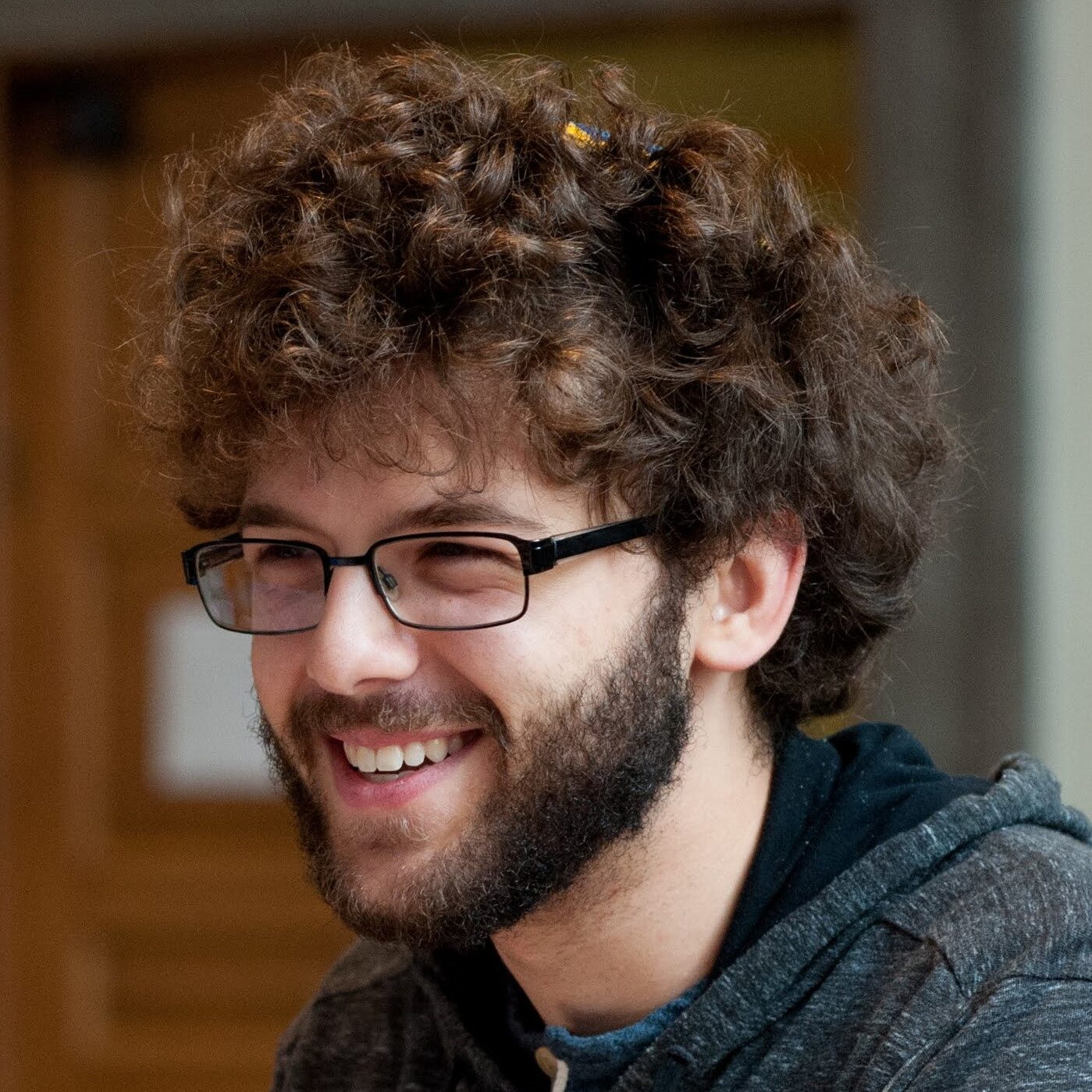
Alex Friedman (he/him) is a Rabbinical student at the Jewish Theological Seminary in his final year of study. He was a fellow in the first cohort of the Exploring Judaism's Writer's Fellowship. A native Texan, Alex grew up in the Conservative movement and has worked with and for Conservative communities across the US and in Israel. He holds a BA in Near Eastern and Judaic Studies (NEJS) and Politics from Brandeis University. Alex enjoys cooking, podcasts, Jewish music and niggunim, queer Torah, and collecting owl tchotchkes.
View all posts

